This section describes the main elements of a written thesis at the bachelor’s and master’s levels. Although the specific structure described here is most relevant for empirical theses, much of the advice is also relevant for theoretical work. Please note that the formal requirements vary between different disciplines, and make sure to confer the guidelines that apply in your field.
For the contents in the various sections you may also confer Organising your writing.
Abstract and foreword
Most readers will turn first to the abstract. Use it as an opportunity to spur the reader’s interest. The abstract should summarise the main contents of your thesis, especially the thesis statement, but does not need to cover every aspect of the main text. The main objective is to give the reader a good idea of what the thesis is about.
In general the abstract should be the last thing that you write, when you know what you have actually written. It is nevertheless a good idea to work on a draft continuously. Writing a good abstract is difficult, since it should only include the most important points of your work. But this is also why working on your abstract can be useful – it forces you to identify exactly what it is you are writing about.
There are usually no formal requirements for forewords, but it is common practice to thank your supervisors, informants, and others who have helped and supported you. If you have received any grants or research residencies, you should also acknowledge these.
Note: Shorter assignments do not require abstracts and forewords.
1. Introduction
Your introduction has two main purposes: 1) to give an overview of the main points of your thesis; and 2) awaken the reader’s interest.
It’s not a bad idea to go through the introduction one last time when the writing is done, to ensure that it connects well with your conclusion.
Tip: For a nice, stylistic twist you can reuse a theme from the introduction in your conclusion. For example, you might present a particular scenario in one way in your introduction, and then return to it in your conclusion from a different – richer or contrasting – perspective.
Your introduction should include:
- The background for your choice of theme
- A discussion of your research question or thesis statement
- A schematic outline of the remainder of your thesis
The sections below discuss each of these elements in turn.
1.1 Background
The background sets the general tone for your thesis. It should make a good impression and convince the reader why the theme is important and your approach relevant. Even so, it should be no longer than necessary.
What is considered a relevant background depends on your field and its traditions. Background information might be historical in nature, or it might refer to previous research or practical considerations. You can also focus on a specific text, thinker or problem.
Academic writing often means having a discussion with yourself (or some imagined opponent). To open your discussion, there are several options available. You may, for example:
- refer to a contemporary event
- outline a specific problem; a case study or an example
- review the relevant research/literature to demonstrate the need for this particular type of research
If it is common in your discipline to reflect upon your experiences as a practitioner, this is the place to present them.
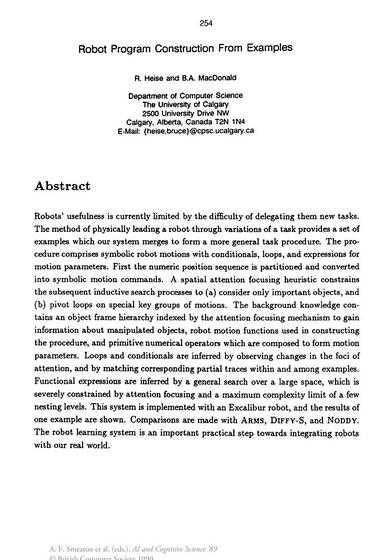
In the remainder of your thesis, this kind of information should be avoided, particularly if it has not been collected systematically.
Tip: Do not spend too much time on your background and opening remarks before you have gotten started with the main text.
Exercise
Write three different opening paragraphs for your thesis using different literary devices
For example:
a) “set the scene” with a (short) narrative
b) adopt a historical approach to the phenomenon you intend to discuss
c) take an example from the media to give your topic current relevance.
Observe to what extent these different openings inspire you, and choose the approach most appropriate to your topic. For example, do you want to spur emotions, or remain as neutral as possible? How important is the historical background? The exercise can be done in small groups or pairs. Discuss what makes an opening paragraph successful (or not). How does your opening paragraph shed light on what is to follow? What will the reader’s expectations be?
1.2 Defining the scope of your thesis
One of the first tasks of a researcher is defining the scope of a study, i.e. its area (theme, field) and the amount of information to be included. Narrowing the scope of your thesis can be time-consuming. Paradoxically, the more you limit the scope, the more interesting it becomes. This is because a narrower scope lets you clarify the problem and study it at greater depth, whereas very broad research questions only allow a superficial treatment.
The research question can be formulated as one main question with (a few) more specific sub-questions or in the form of a hypothesis that will be tested.
Your research question will be your guide as your writing proceeds. If you are working independently, you are also free to modify it as you go along.
How do you know that you have drafted a research question? Most importantly, a research question is something that can be answered . If not, you have probably come up with a theme or field, not a question.
- Use interrogative words: how, why, which (factors/situations) etc.
- Some questions are closed and only invoke concrete/limited answers. Others will open up for discussions and different interpretations.
Asking “What &…?” is a more closed question than asking “How?” or “In what way?”
Asking “Why” means you are investigating what causes of a phenomenon. Studying causality is methodologically demanding. - Feel free to pose partially open questions that allow discussions of the overall theme, e.g. “In what way &…?”; “How can we understand [a particular phenomenon]?”
- Try to condense your research question into one general question – and perhaps a few more specific sub-questions (two or three will usually suffice).
1.3 Outline
The outline gives an overview of the main points of your thesis. It clarifies the structure of your thesis and helps you find the correct focus for your work. The outline can also be used in supervision sessions, especially in the beginning. You might find that you need to restructure your thesis. Working on your outline can then be a good way of making sense of the necessary changes. A good outline shows how the different parts relate to each other, and is a useful guide for the reader .
It often makes sense to put the outline at the end of the introduction, but this rule is not set in stone. Use discretion: What is most helpful for the reader? The information should come at the right point – not too early and not too late.
2. Theory section
The theory used in an empirical study is meant to shed light on the data in a scholarly or scientific manner. It should give insights not achievable by ordinary, everyday reflections. The main purpose of using theory is to analyse and interpret your data. Therefore, you should not present theoretical perspectives that are not being put to use. Doing so will create false expectations, and suggests that your work is incomplete.
Not all theses have a separate theory section. In the IMRaD format the theory section is included in the introduction, and the second chapter covers the methods used.
What kind of theory should you choose? Since the theory is the foundation for your data analysis it can be useful to select a theory that lets you distinguish between, and categorise different phenomena. Other theories let you develop the various nuances of a phenomenon. In other words, you have a choice of either reducing the complexity of your data or expanding upon something that initially looks simple.
How much time and space should you devote to the theory chapter? This is a difficult question. Some theses dwell too long on theory and never get to the main point: the analysis and discussion. But it is also important to have read enough theory to know what to look for when collecting data. The nature of your research should decide: Some studies do not require much theory, but put more emphasis on the method, while other studies need a rich theory section to enable an interesting discussion.
3. Method section
In a scholarly research article, the section dealing with method is very important. The same applies to an empirical thesis. For students, this can be a difficult section to write, especially since its purpose may not always be clear.
The method chapter should not iterate the contents of methodology handbooks. For example, if you have carried out interviews, you do not need to list all the different types of research interview. You also do not need to describe the differences between quantitative and qualitative methods, or list all different kinds of validity and reliability.
What you must do is to show how your choice of design and research method is suited to answering your research question(s). Demonstrate that you have given due consideration to the validity and reliability of your chosen method. By &”showing&” instead of &”telling&”, you demonstrate that you have understood the practical meaning of these concepts. This way, the method section is not only able to tie the different parts of your thesis together, it also becomes interesting to read!
- Show the reader what you have done in your study, and explain why. How did you collect the data? Which options became available through your chosen approach?
- What were your working conditions? What considerations did you have to balance?
- Tell the reader what you did to increase the validity of your research. E.g. what can you say about the reliability in data collection? How do you know that you have actually investigated what you intended to investigate? What conclusions can be drawn on this basis? Which conclusions are certain and which are more tentative? Can your results be applied in other areas? Can you generalise? If so, why? If not, why not?
- You should aim to describe weaknesses as well as strengths. An excellent thesis distinguishes itself by defending – and at the same time criticising – the choices made.
4. Analysis
Your analysis, along with your discussion, will form the high light of your thesis. In the IMRaD format, this section is titled “Results”. This is where you report your findings and present them in a systematic manner. The expectations of the reader have been built up through the other chapters, make sure you fulfill these expectations.
To analyse means to distinguish between different types of phenomena – similar from different. Importantly, by distinguishing between different phenomena, your theory is put to work. Precisely how your analysis should appear, however, is a methodological question. Finding out how best to organise and present your findings may take some time. A good place to look for examples and inspiration is repositories for master’s theses.
If you are analysing human actions, you may want to engage the reader’s emotions. In this case it will be important to choose analytical categories that correlate to your chosen theory. Engaging emotions is not the main point, but a way to elucidate the phenomenon so that the reader understands it in a new and better way.
Note. Not all theses include a separate chapter for analysis.
5. Discussion
In many thesis the discussion is the most important section. Make sure that you allocate enough time and space for a good discussion. This is your opportunity to show that you have understood the significance of your findings and that you are capable of applying theory in an independent manner.
The discussion will consist of argumentation. In other words, you investigate a phenomenon from several different perspectives. To discuss means to question your findings, and to consider different interpretations. Here are a few examples of formulations that signal argumentation:
- On the one hand &… and on the other
- But is it really true that&…
- &… on can it also be supposed&…?
- &… another possible explanation may be &…
6. Conclusion or summing up?
The final section of your thesis may take one of several different forms. Some theses need a conclusion, while for others a summing up will be appropriate. The decisive factor will be the nature of your thesis statement and research question.
Open research questions cannot always be answered, but if a definite answer is possible, you must provide a conclusion. The conclusion should answer your research question(s). Remember that a negative conclusion is also valid.
A summing up should repeat the most important issues raised in your thesis (particularly in the discussion), although preferably stated in a (slightly) different way. For example, you could frame the issues within a wider context.
Placing your thesis in perspective
In the final section you should place your work in a wider, academic perspective and determine any unresolved questions. During the work, you may have encountered new research questions and interesting literature which could have been followed up. At this point, you may point out these possible developments, while making it clear for the reader that they were beyond the framework of your current project.
- Briefly discuss your results through a different perspective. This will allow you to see aspects that were not apparent to you at the project preparation stage
- Highlight alternative research questions that you have found in the source materials used in the project
- Show how others have placed the subject area in a wider context
- If others have drawn different conclusions from yours, this will provide you with ideas of new ways to view the research question
- Describe any unanswered aspects of your project
- Specify potential follow up and new projects
A thesis should “bite itself in the tail”
There should be a strong connection between your conclusion and your introduction. All the themes and issues that you raised in your introduction must be referred to again in one way or another. If you find out at this stage that your thesis has not tackled an issue that you raised in the introduction, you should go back to the introduction and delete the reference to that issue. An elegant way to structure the text is to use the same textual figure or case in the beginning as well as in the end. When the figure returns in the final section, it will have taken on a new and richer meaning through the insights you have encountered, created in the process of writing.
J. Schimel, 2012 Writing Science. How to write papers that get cited and proposals that get funded. New York: Oxford University Press
USEFUL PHRASES
Useful phrases when writing a dissertation abstract
This section sets out some useful phrases that you can use and build on when writing your undergraduate or master’s level dissertation abstract. As the section, How to structure your dissertation abstract explains, the abstract has a number of components, typically including: (a) study background and significance; (b) components of your research strategy; (c) findings; and (d) conclusions. The phrases below build on these four components .
This study (dissertation, research)?
aims to illuminate?
examines the role of.
explores why.
investigates the effects of.
assesses the impact of. on.
developed and tested the idea that.
investigated the role of.
outline how.
introduce the concept of.
extend prior work on.
examine the relationship between. and.
identify.
evaluate these. by.
In this study (dissertation, research) I.
propose a model of.
Leading with research questions
This study (dissertation, research).
is motivated by two research questions: (1) [Insert research question one]? (2) [Insert research question two]? To examine these questions, the study?
“[Insert a research question]?” is a fundamental question in [the name of your area of interest]. We suggest [argue] that a new generation of research in this area needs to address the extended question: [Insert your research question]?
Leading with research hypotheses
This study (dissertation, research).
offers two hypotheses: (1) [insert research hypothesis one]; and (2) [insert research hypothesis two].
tested hypotheses regarding the relationship between. and.
hypothesized that [insert variable] is negatively [positively] related to.
hypothesized that [insert variable] is more negatively [positively] related to [insert variable] than [insert variable].
Leading with a dissertation aim or goals
This study (dissertation, research).
has three goals: (1) [insert goal one], (2) [insert goal two], and (3) [insert goal three].
Previous research (extent research, previous studies, or prior studies).
indicates that.
offers a descriptive account of.
has shown that.
Literature on [insert area of the literature] has focused almost exclusively on.
Synthesizing [e.g. name of theories], this research built and tested a theoretical model linking.
This model addresses X (e.g. 2) major gaps in the literature.
Drawing on [insert name] research, we argue that.
In bridging the two literature gaps, a model of [insert text] is proposed.
Significance of the study
We develop theory to explain how.
Our most important contribution is.
This study advances our understanding of.
To date, no systematic investigation has considered.
We examine how organisations use [insert text] to overcome.
in-depth case studies of [X number of private/public] enterprises in [country].
a laboratory experiment and a field study to test our hypotheses.
an inductive study of.
multiple methods to test.
a sample of [X number of people, firms, data, objects, e.g. doctors, banks, songs], we collected data from three sources [e.g. X, Y and Z].
comparative case analysis, this research explored the role of.
To illustrate these ideas, [insert company name or type] was used as a case study to show how.
We tested these hypotheses using [e.g. student test score] data to measure [e.g. teacher performance].
We developed a 9-item scale to measure.
Using data from.
The findings from the research.
show that the impact of [insert text] on [insert text] is more complex than previously thought/assumed.
address a controversial belief among practitioners that.
illustrate the antecedents and consequences of [insert text] and [insert text] in.
suggest that the effect of [variable X] on [variable Y] was moderated over time when.
A predicted, the.
Contrary to our expectations.
The results, implications for managers, and future research are discussed.
Theoretical contributions and managerial implications of the findings are discussed.
provide support for the key arguments.
support the prediction that.
support the model:
offer insights into.
prompt a re-thinking of [insert your area of interest ]
We conclude that.
If you would like us to add more of these kinds of phrases, please leave us feedback .
Can you make it compelling enough to attract your reader’s mind?
Writing A Thesis Abstract
Tips Revealed To Get You Write An Attention-Grabbing
Thesis Abstract
A thesis abstract is a brief and compact form a thesis giving the important details and introduction to the thesis. A thesis abstract highlights the main points discussed in the thesis. In short, we can say a thesis abstract is a mini-thesis.
How To Write Thesis Abstract?
Writing thesis abstract is a core part of your thesis. So you can’t afford to write it carelessly at all. You should follow the under-mentioned up to the mark guidelines to write a perfect thesis abstract.
7 Vital Writing
Abstract Of Thesis
You need to apply the following tips when you go for writing abstract for thesis.
- First of all, go through your thesis and highlight the objectives, scope, methods, conclusions, and any other important information.
- Write the objectives methods, conclusions, recommendations, prominently discussed in your thesis’s paper.
- Now highlight the outcomes of your thesis.
- Collect all the highlighted sections into one paragraph.
- Rewrite all the information in another way to make it look different.
- Start the first sentence with the phrase this paper or this study.
- Revise your thesis paper to check any errors such as grammar, any left out information, verbosity, and irrelevant information.
Check out your thesis abstract to be sure that you have employed these precautions:
- Thesis is supposed to be written after the completion of thesis. Writing it at early stage might make you miss important details to include.
- Restrict the thesis abstract to two paragraphs.
- Write it in a concise manner that your reader should get a clear idea what should he expect in thesis. Information in your thesis abstract and thesis must match.
- Remove any extra or unnecessary details.
- Write full forms of abbreviations and acronyms when you use it first time.
- Put it in a very simple language since it is to give a quick and clear glimpse of thesis.
- Write the thesis abstract in past tense if you are writing it after completing thesis which is a better way.
- Write in present or future tense if you write it in the beginning.
Sample Thesis Abstract
“The incidence of great fires in the western United States raises questions pertaining to climate change effect of on fire regimes in the past and future. Sagebrush steppe has long been exposed to agriculture, unnecessary cropping and enveloping species. This dying out ecological unit is facing a latest risk of spreading big wildfires and weather change. The purposes of this study were to rebuild the fire history for sagebrush steppe ecosystems across three spatial scales of sagebrush-dominated steppe: a. Idaho National Laboratory, b. Snake River Plain, and c. portions of the Northern Basin and Range to take in the Snake River Plain. This study used geographic information systems (GIS) to associate size and occurrence of fires over 5,000 ha with landscape plant life and climatic variables across manifold spatial and sequential scales. The impact of climate changeability and intense climatic events on fire occurrence and size can differ depending on the spatial and temporal scales over which information is collected and examined. Large fires grew between 1960 – 2003 both in size and number, and increasingly formed a larger percentage of all wildfires over the time period studied. At the broadest spatial scale, the size of large fires was positively associated with average yearly utmost temperature during the year of the fire happening. Fire occurrence and average yearly precipitation one year preceding to the large fire event were also show a relationship. There was also some connection with topographical side. From 1960 to 2003 the area was subject to an increase in maximum temperature and a decrease in precipitation. Increases in large fire occurrence and size are attributed to increase in air temperature and exotic grasses. My results and the projected tendency toward warmer, drier growing seasons and summers suggest that sagebrush steppe systems may carry on to practice an increase in large fires in the future.”
Free eBook on “How to write a thesis statement in less than 30 minutes”
Click here to download your FREE E-Book on “How To Write Thesis Statement” and write your thesis statement in less than 30 minutes, Guaranteed.
Order Your Custom Thesis Writing Now!
- Any essay type or topic
- Professional writers
- On time delivery
- Money Back guarantee
- Written on your specific topic
- Phone, E-mail Live Chat Support
- Contact your writer anytime
- Guaranteed “A” grade
- Free topic development
- Free unlimited revisions
- Free Plagiarism scan report
- Free Bibliography page
- Free Title page
- Free Table of content
LIMITED TIME DISCOUNT OFFER
USEFUL PHRASES
Useful phrases when writing a dissertation abstract
This section sets out some useful phrases that you can use and build on when writing your undergraduate or master’s level dissertation abstract. As the section, How to structure your dissertation abstract explains, the abstract has a number of components, typically including: (a) study background and significance; (b) components of your research strategy; (c) findings; and (d) conclusions. The phrases below build on these four components .
This study (dissertation, research)?
aims to illuminate?
examines the role of.
explores why.
investigates the effects of.
assesses the impact of. on.
developed and tested the idea that.
investigated the role of.
outline how.
introduce the concept of.
extend prior work on.
examine the relationship between. and.
identify.
evaluate these. by.
In this study (dissertation, research) I.
propose a model of.
Leading with research questions
This study (dissertation, research).
is motivated by two research questions: (1) [Insert research question one]? (2) [Insert research question two]? To examine these questions, the study?
“[Insert a research question]?” is a fundamental question in [the name of your area of interest]. We suggest [argue] that a new generation of research in this area needs to address the extended question: [Insert your research question]?
Leading with research hypotheses
This study (dissertation, research).
offers two hypotheses: (1) [insert research hypothesis one]; and (2) [insert research hypothesis two].
tested hypotheses regarding the relationship between. and.
hypothesized that [insert variable] is negatively [positively] related to.
hypothesized that [insert variable] is more negatively [positively] related to [insert variable] than [insert variable].
Leading with a dissertation aim or goals
This study (dissertation, research).
has three goals: (1) [insert goal one], (2) [insert goal two], and (3) [insert goal three].
Previous research (extent research, previous studies, or prior studies).
indicates that.
offers a descriptive account of.
has shown that.
Literature on [insert area of the literature] has focused almost exclusively on.
Synthesizing [e.g. name of theories], this research built and tested a theoretical model linking.
This model addresses X (e.g. 2) major gaps in the literature.
Drawing on [insert name] research, we argue that.
In bridging the two literature gaps, a model of [insert text] is proposed.
Significance of the study
We develop theory to explain how.
Our most important contribution is.
This study advances our understanding of.
To date, no systematic investigation has considered.
We examine how organisations use [insert text] to overcome.
in-depth case studies of [X number of private/public] enterprises in [country].
a laboratory experiment and a field study to test our hypotheses.
an inductive study of.
multiple methods to test.
a sample of [X number of people, firms, data, objects, e.g. doctors, banks, songs], we collected data from three sources [e.g. X, Y and Z].
comparative case analysis, this research explored the role of.
To illustrate these ideas, [insert company name or type] was used as a case study to show how.
We tested these hypotheses using [e.g. student test score] data to measure [e.g. teacher performance].
We developed a 9-item scale to measure.
Using data from.
The findings from the research.
show that the impact of [insert text] on [insert text] is more complex than previously thought/assumed.
address a controversial belief among practitioners that.
illustrate the antecedents and consequences of [insert text] and [insert text] in.
suggest that the effect of [variable X] on [variable Y] was moderated over time when.
A predicted, the.
Contrary to our expectations.
The results, implications for managers, and future research are discussed.
Theoretical contributions and managerial implications of the findings are discussed.
provide support for the key arguments.
support the prediction that.
support the model:
offer insights into.
prompt a re-thinking of [insert your area of interest ]
We conclude that.
If you would like us to add more of these kinds of phrases, please leave us feedback .




 Arsis thesis definition in writing
Arsis thesis definition in writing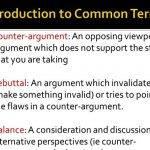 The secularization thesis criticisms and rebuttals in writing
The secularization thesis criticisms and rebuttals in writing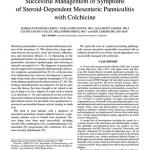 Micropropagation of banana thesis proposal
Micropropagation of banana thesis proposal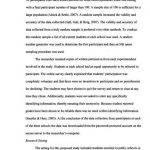 Thesis proposal sample on classroom management practices
Thesis proposal sample on classroom management practices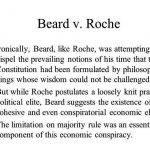 John p roche thesis proposal
John p roche thesis proposal






